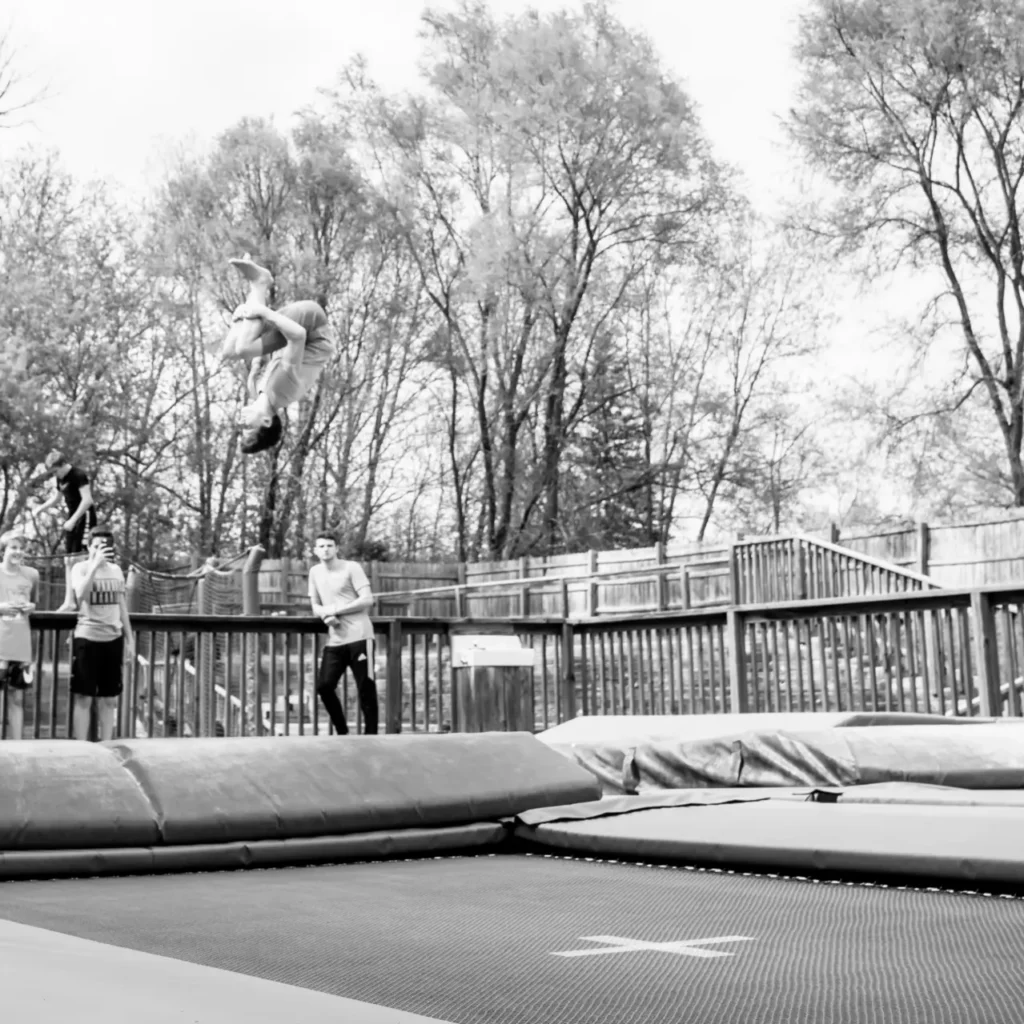Trampoline Skiing: Flipping and Spinning on Snow-Covered Trampolines
Winter sports enthusiasts are always on the lookout for unique and thrilling activities to spice up the snowy season. If you’re tired of the traditional skiing or snowboarding experience, why not take things to the next level with trampoline skiing? This exhilarating sport combines the acrobatics of trampolining with the excitement of skiing, resulting in a gravity-defying experience that will leave you breathless. In this article, we’ll delve into the world of trampoline skiing, exploring its origins, the equipment needed, how to get started, and the safety measures to keep in mind.
The Origins of Trampoline Skiing: A Fusion of Two Thrilling Worlds
Trampoline skiing is a relatively new phenomenon that emerged from the fusion of two exciting sports: trampolining and skiing. Trampolining, known for its high-flying flips and spins, found an unexpected yet thrilling partner in skiing. The combination of bouncing on a trampoline while wearing skis opens up a world of possibilities for aerial tricks and maneuvers that go beyond the boundaries of traditional winter sports.
Imagine the rush of skiing down a snowy slope, launching off a ramp, and performing gravity-defying flips and spins mid-air. Trampoline skiing brings a new dimension to winter sports, attracting thrill-seekers and adventurers eager to push the limits of what’s possible on the snow.
Equipment Essentials: Skis, Trampolines, and Safety Gear
To embark on the trampoline skiing journey, you’ll need the right equipment to ensure a safe and enjoyable experience. The primary gear includes a pair of freestyle skis designed for tricks and stunts, a sturdy and well-maintained trampoline with a snow-covered surface, and of course, the essential safety gear.
Freestyle skis are shorter and more maneuverable than traditional skis, allowing for quick spins and flips. The trampoline, typically set up with a specially designed surface to simulate a snowy environment, provides the necessary bounce for executing aerial tricks. Safety gear, including a helmet, goggles, and padded clothing, is crucial to protect against potential falls and collisions.
Getting Started: Tips and Techniques for Trampoline Skiing
Now that you have the right gear, it’s time to hit the trampoline slopes. Here are some tips and techniques to help you get started on your trampoline skiing adventure:
- Master the Basics: Before attempting complex tricks, ensure you have a solid foundation in both skiing and trampolining. Practice basic jumps, spins, and flips separately before combining them on the trampoline.
- Use a Spotter: Having a spotter can provide valuable feedback on your technique and ensure your safety. They can help guide you through new tricks and provide assistance if needed.
- Start Small: Begin with simple tricks and gradually progress to more challenging maneuvers. Starting small allows you to build confidence and reduce the risk of injury.
- Focus on Technique: Trampoline skiing is not just about the flips and spins; proper technique is crucial. Pay attention to your body positioning, balance, and landing to execute tricks with precision.
Safety First: Precautions for a Risky Yet Rewarding Adventure
While trampoline skiing offers an adrenaline-packed experience, safety should always be a top priority. Here are some precautions to keep in mind before launching into the world of flips and spins:
- Helmet and Protective Gear: Always wear a helmet and appropriate protective gear to minimize the risk of injury in case of falls or collisions.
- Trampoline Maintenance: Ensure the trampoline is in good condition, with no tears or damage to the surface. Regularly inspect the equipment for any potential hazards.
- Weather Considerations: Check weather conditions before trampoline skiing. Wet or icy surfaces can affect the trampoline’s bounce and pose additional risks.
- Training and Supervision: Beginners should undergo proper training, preferably under the supervision of an experienced trampoline skier. Learning from someone with expertise can help prevent accidents and improve your skills more efficiently.
Frequently Asked Questions (FAQs)
- Is trampoline skiing suitable for beginners?
- Trampoline skiing can be enjoyed by beginners, but it’s crucial to start with basic trampolining and skiing skills. Seeking guidance from experienced individuals and using proper safety gear is essential for a safe and enjoyable experience.
- What type of trampoline is best for trampoline skiing?
- A sturdy trampoline with a specially designed surface to simulate snow is ideal for trampoline skiing. Ensure the trampoline is well-maintained, free of damage, and placed on a flat, stable surface.
- Are there age restrictions for trampoline skiing?
- While trampoline skiing can be enjoyed by individuals of various ages, it is recommended for those with a background in skiing and trampolining. Children should be supervised, and all participants should adhere to safety guidelines to prevent accidents.
Trampoline skiing opens up a world of excitement and creativity for winter sports enthusiasts. With the right equipment, proper training, and a focus on safety, you can experience the thrill of flipping and spinning on snow-covered trampolines. So, gear up, hit the slopes, and defy gravity in this unique fusion of skiing and acrobatics.

